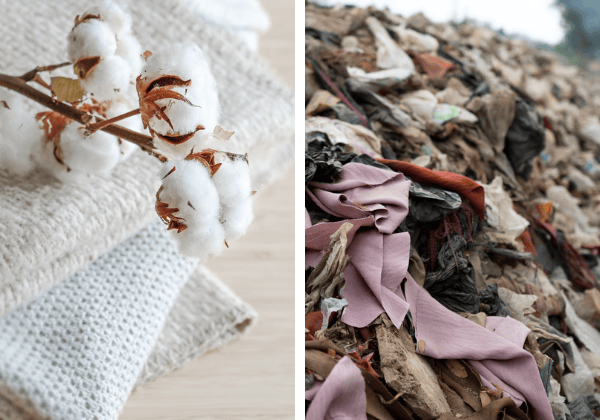Turning textile waste into compost: A new world-first technical specification
Statements
In a global first, Standards Australia has released a new technical specification that could transform how we deal with textile waste: SA TS 5399:2025 – Compostable Natural Fibre Textiles.
Australia generates around 860,000t of textile waste each year, yet only about 5% is estimated to be recycled (excluding charitable donations). Led by Dr Chris Hurren from Deakin University, this new specification introduces a test method to help determine whether a natural fibre textile or garment can be composted in line with AS 4454:2012 – Composts, Soil Conditioners and Mulches, within industrial composting facilities.
Recycling natural fibre textiles at scale remains a global challenge. This document brings industry closer to trialling composting solutions that could safely return end-of-life textiles to the soil, turning waste into are source.
“Australia’s soils are among our most valuable natural assets. In developing this specification, we’ve taken a careful and considered approach – one that’s grounded in science and guided by a broader vision of a bio-circular economy, where both human and ecological health are prioritised”, said Blake Lindley, Chair of PC-005 Compostable Textile committee.
The specification also supports safer product design by helping brands identify dyes and other ingredients that may affect compostability. “Fabric manufacturing involves many unknown treatments and chemicals. Being able to identify upfront those most likely to be problematic allows brands to work with suppliers to design them out at the beginning, increasing the opportunity for textile botanical circularity. More research into post-consumer waste is required but TS 5399 gives industry, government, and consumers a new and clear pathway to both reduce waste and improve environmental outcomes'”, added Stephanie Devine, member of PC-005 committee.
The benefits are wide-reaching. The specification can:
- Help reduce landfill burden and associated impact
- Derisk further work testing the processing of textiles in composting facilities at scale
- Supports national efforts to monitor and reduce the import of hazardous chemicals through textiles, aligning with safety priorities
- Reflect the creation of more jobs – recycling generates over three times as many jobs as landfilling
While composting textiles depends on local climate and infrastructure, SA TS 5399 lays the groundwork for future Australian and international standards, moving toward a certifiable product framework that supports public health, environmental protection, and industry compliance.
SA TS 5399:2025 – Compostable Natural Fibre Textiles is available through the Standards Australia Store and our distribution partners.

In a global first, Standards Australia has released a new technical specification that could transform how we deal with textile waste: SA TS 5399:2025 – Compostable Natural Fibre Textiles.
Australia generates around 860,000t of textile waste each year, yet only about 5% is estimated to be recycled (excluding charitable donations). Led by Dr Chris Hurren from Deakin University, this new specification introduces a test method to help determine whether a natural fibre textile or garment can be composted in line with AS 4454:2012 – Composts, Soil Conditioners and Mulches, within industrial composting facilities.
Recycling natural fibre textiles at scale remains a global challenge. This document brings industry closer to trialling composting solutions that could safely return end-of-life textiles to the soil, turning waste into are source.
“Australia’s soils are among our most valuable natural assets. In developing this specification, we’ve taken a careful and considered approach – one that’s grounded in science and guided by a broader vision of a bio-circular economy, where both human and ecological health are prioritised”, said Blake Lindley, Chair of PC-005 Compostable Textile committee.
The specification also supports safer product design by helping brands identify dyes and other ingredients that may affect compostability. “Fabric manufacturing involves many unknown treatments and chemicals. Being able to identify upfront those most likely to be problematic allows brands to work with suppliers to design them out at the beginning, increasing the opportunity for textile botanical circularity. More research into post-consumer waste is required but TS 5399 gives industry, government, and consumers a new and clear pathway to both reduce waste and improve environmental outcomes'”, added Stephanie Devine, member of PC-005 committee.
The benefits are wide-reaching. The specification can:
- Help reduce landfill burden and associated impact
- Derisk further work testing the processing of textiles in composting facilities at scale
- Supports national efforts to monitor and reduce the import of hazardous chemicals through textiles, aligning with safety priorities
- Reflect the creation of more jobs – recycling generates over three times as many jobs as landfilling
While composting textiles depends on local climate and infrastructure, SA TS 5399 lays the groundwork for future Australian and international standards, moving toward a certifiable product framework that supports public health, environmental protection, and industry compliance.
SA TS 5399:2025 – Compostable Natural Fibre Textiles is available through the Standards Australia Store and our distribution partners.

Email:

Email:


